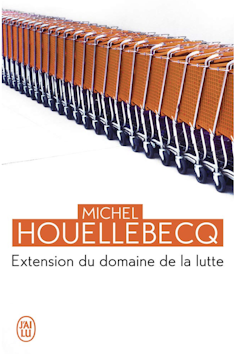Source: The Conversation – in French – By Priya Bhide, Clinical Reader Women’s Health Research Unit, Centre for Public Health and Policy, Queen Mary University of London

Microplastiques, nanoplastiques… ces déchets plastiques de tailles et de caractéristiques variables s’accumulent dans l’environnement… aussi dans nos organismes. Concernant la femme enceinte, des expériences en laboratoire suggèrent que certains de ces fragments microscopiques seraient susceptibles de traverser le placenta. Mais les données manquent pour évaluer les risques pour le fœtus.
Pendant la grossesse, le placenta représente un lien vital entre la mère et le bébé. Il fournit au fœtus l’oxygène et les nutriments nécessaires, élimine les déchets et agit comme un bouclier partiel contre les substances nocives. Mais cette barrière est loin d’être infranchissable.
Une revue systématique datant de 2023 suggérait que les microplastiques – de minuscules particules de plastique dont la taille est inférieure à cinq millimètres – pourraient passer du sang de la mère au fœtus. Si cette hypothèse se confirme, ses conséquences sur le développement pendant la grossesse et sur la santé à long terme des générations futures seraient majeures.
Les déchets plastiques ne disparaissent pas aisément. Au fil du temps, la lumière du soleil, les conditions environnementales et l’usure mécanique les décomposent en fragments de plus en plus petits, d’abord sous la forme de gros morceaux appelés macroplastiques en passant par les mésoplastiques, puis les microplastiques et éventuellement les nanoplastiques. Ces derniers correspondent à des particules de moins de 100 nanomètres de diamètre, suffisamment petites pour être mesurées à l’échelle moléculaire.
Ces particules proviennent de la dégradation des composants en plastique d’objets du quotidien : polyéthylène des sacs et bouteilles en plastique, polypropylène des récipients alimentaires et des pailles, polystyrène des gobelets et emballages à emporter, polyéthylène téréphtalate (PET) des bouteilles de boissons, ainsi que polychlorure de vinyle (PVC) des tuyaux, des jouets et des vêtements.
Une étude publiée en 2025, qui portait sur des recherches menées sur des animaux, des cellules cultivées en laboratoire et des échantillons de tissus humains, a montré que les microplastiques et les nanoplastiques peuvent traverser la barrière placentaire. Une fois à l’intérieur, ils sont susceptibles de perturber le fonctionnement délicat de l’unité fœto-placentaire – le système combiné du placenta et du fœtus – et ce, de plusieurs façons.
Des études suggèrent que les microplastiques pourraient bloquer ou perturber les voies normales utilisées par les cellules pour communiquer, déclencher la mort cellulaire programmée (apoptose) et provoquer un stress oxydatif, c’est-à-dire une forme de dommage cellulaire qui survient quand des molécules nocives contenant de l’oxygène s’accumulent plus rapidement que le corps ne peut les neutraliser. Certains plastiques pourraient également perturber le système endocrinien qui contrôle la libération d’hormones essentielles à la croissance et au développement.
La capacité à traverser la barrière placentaire est une question particulièrement préoccupante car cette barrière agit normalement comme un filtre hautement sélectif, censé protéger le fœtus en développement de nombreuses substances nocives tout en laissant passer les nutriments essentiels et l’oxygène. Si les plastiques étaient en mesure de contourner ces défenses, ils pourraient interférer avec la formation des organes et agir sur la santé à long terme pendant l’une des étapes les plus vulnérables du développement humain.
La manière exacte dont ces particules traversent le placenta n’est pas encore entièrement comprise. Des facteurs tels que la taille des particules, leur poids et leur charge superficielle (la minuscule charge électrique qu’elles transportent) semblent jouer un rôle, tout comme l’environnement biologique dans lequel elles se déplacent.
Des expériences menées sur des modèles placentaires humains ont montré que les particules de polystyrène plus grosses (50 à 500 nanomètres) n’endommageaient pas les cellules placentaires et, dans certains cas, semblaient même améliorer leur survie. En revanche, des particules beaucoup plus petites (20 à 40 nanomètres) provoquaient la mort de certaines cellules et ralentissaient la croissance d’autres.
Les études menées sur des animaux ont donné des résultats mitigés. Dans certaines expériences, la plupart des nanoplastiques sont restés dans le placenta, seule une petite quantité a atteint le fœtus. Dans les études en laboratoire qui avaient recours à des placentas humains, les particules plus grosses étaient généralement piégées, tandis que les plus petites passaient en quantités limitées.
D’autres recherches ont montré que les nanoplastiques pouvaient se déplacer jusque dans les organes fœtaux, notamment dans le cerveau, les poumons, le foie, les reins et le cœur. Même lorsque ces organes semblaient normaux au microscope, les chercheurs ont parfois constaté que des placentas étaient plus petits et de poids à la naissance plus faibles, autant de changements qui peuvent affecter la santé du bébé.
Dans l’ensemble, cela suggère que tous les nanoplastiques ne sont pas dangereux, mais que selon leur taille et leur spécificité, ils peuvent présenter des risques réels pendant la grossesse.
Période critique pour les dommages causés par les microplastiques
Le développement fœtal est un processus finement réglé, durant lequel la croissance, le mouvement et la mort des cellules sont étroitement contrôlés. Cela le rend particulièrement vulnérable aux « agressions » environnementales pendant les périodes critiques du développement. Selon la théorie de la reprogrammation fœtale de Barker, également connue sous le nom d’hypothèse des « origines développementales de la santé et de la maladie », les conditions dans l’utérus pourraient « programmer » le développement des organes, des tissus et du métabolisme du bébé.
Les expositions nocives pendant la grossesse, telles qu’une alimentation trop pauvre, des toxines, du stress ou des polluants type microplastiques, peuvent modifier de façon permanente la formation et le fonctionnement des organes. Ces changements ne provoqueraient pas immédiatement des maladies. Mais ils pourraient augmenter le risque de développer plus tard des pathologies chroniques comme le diabète, l’hypertension artérielle et les maladies cardiaques.
Si, par exemple, le placenta est endommagé ou si l’apport en nutriments est limité, le fœtus peut s’adapter en donnant la priorité à l’irrigation sanguine du cerveau au détriment des autres organes. Cela peut contribuer à la survie à court terme, mais également entraîner une réduction de la taille des reins, une altération du métabolisme ou des modifications de la structure des vaisseaux sanguins, tous ces évènements ayant des conséquences à long terme sur la santé.
Les microplastiques consommés par le biais de l’alimentation ou de l’eau peuvent également perturber le fragile équilibre microbien de l’intestin, endommager la muqueuse intestinale, nuire à l’absorption des nutriments et modifier la façon dont les graisses et les protéines sont transformées.
Des expériences en laboratoire suggèrent que les nanoparticules de polystyrène pourraient pénétrer dans les embryons, s’accumuler dans plusieurs organes et provoquer des effets tels qu’un ralentissement du rythme cardiaque et une diminution de l’activité, même à très faibles doses. Lorsqu’elles sont inhalées par la mère, ces particules peuvent se déplacer vers le placenta, puis vers le cerveau et le cœur du fœtus.
Il existe également des inquiétudes quant aux effets potentiels sur le cerveau en développement. Certaines études indiquent que les microplastiques sont susceptibles de s’accumuler dans des régions essentielles à l’apprentissage, à la mémoire et au comportement, notamment le cervelet, l’hippocampe et le cortex préfrontal. Elles pourraient ensuite causer des dommages oxydatifs, modifier les niveaux de neurotransmetteurs présents (les messagers chimiques du cerveau) et désactiver certains gènes nécessaires au développement normal du cerveau.
Chez les animaux, l’exposition prénatale aux microplastiques est associée à des comportements de type anxieux, à des troubles de l’apprentissage, à des schémas anormaux de croissance des cellules nerveuses, à un amincissement du tissu cérébral ainsi qu’ à une perturbation des connexions entre neurones.
Lacunes dans les connaissances
Malgré ces signaux inquiétants, il reste encore beaucoup à découvrir. La recherche dans ce domaine est entravée par le fait que la plupart des études sont menées sur des animaux ou dans des conditions de laboratoire contrôlées. Peu de données proviennent directement de femmes enceintes.
Nous ne comprenons toujours pas de manière précise comment les microplastiques se déplacent dans l’organisme, dans quelle mesure ils peuvent s’accumuler dans le placenta et dans le fœtus, ni avec quelle facilité ils peuvent être éliminés.
Il est clair que des recherches supplémentaires sont nécessaires et ce, de toute urgence. Comprendre si, oui ou non, les microplastiques constituent une menace réelle pour la santé reproductive et le développement fœtal pourrait aider à élaborer des politiques dédiées à la production, à la consommation et à l’élimination des plastiques, aussi à éclairer les conseils à prodiguer aux femmes pendant leur grossesse.
![]()
Les auteurs ne travaillent pas, ne conseillent pas, ne possèdent pas de parts, ne reçoivent pas de fonds d’une organisation qui pourrait tirer profit de cet article, et n’ont déclaré aucune autre affiliation que leur organisme de recherche.
– ref. Microplastiques, grossesse et placenta : ce que nous savons et ce que nous ignorons encore – https://theconversation.com/microplastiques-grossesse-et-placenta-ce-que-nous-savons-et-ce-que-nous-ignorons-encore-264602

















